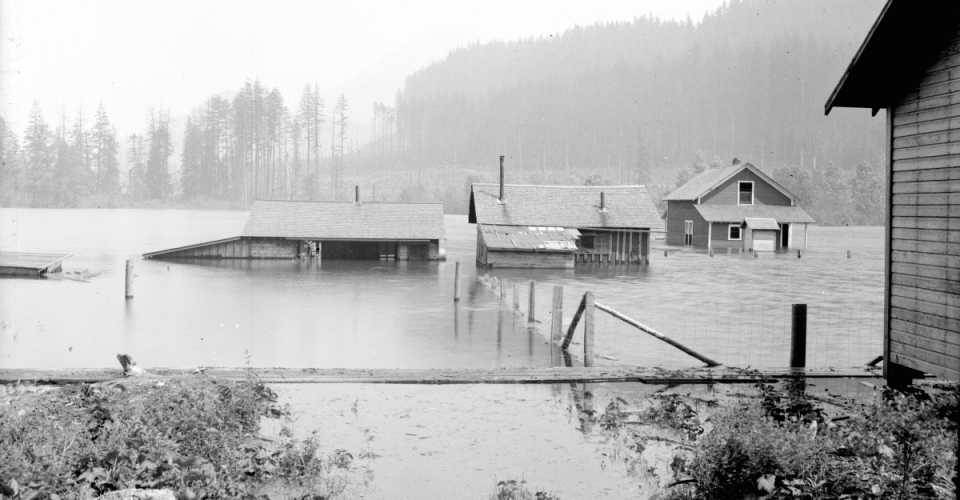Floods are the most common natural disaster in the United States. From 2003 to 2012, total flood insurance claims averaged nearly $4 billion per year. Nearly 20% of all flood insurance claims come from moderate-to low risk areas. Some homeowners face flood risk from inside causes (like a broken pipe or water heater), which is usually repaired by a plumber. But flood risks from outside events are quite common and can cause major damage to properties, homes and surrounding areas.
Every home is at risk of flooding
Everyone lives in a flood zone and all 50 states have experienced flash floods. The question is if you live in a high, medium or low-risk area. In high-risk areas, there is at least a 1 in 4 chance of flooding during a 30-year mortgage. However, losses due to flooding are not covered under typical homeowner’s and business insurance policies.
Most common causes of flooding
Snow: Some homeowners face floods every spring, when winter snow turns to raging rivers and overflows banks and flood plains. When ice melts on homes and structures, before the ground is thawed, the melted snow sits on top of the ground and cause flood damage to neighboring homes. In fact, the Great Midwestern Flood of 1993 that lasted 4 months caused damage to 49,000 homes and $16 billion in damage.
Seasonal Rain: Heavy seasonal rains not only cause water levels to rise, but can create mudslides and landslides. Heavy rain can also force debris, like leaves and garbage, into drainage systems, causing blockages, water backups and large water formations that can creep into lawns and basements.
Storms: Living in hurricane or tropical storm zones can also be considered a high flood risk area for homeowners. Other types of storms, like nor-easters, can bring an upsurge in water from high winds. Tropical storms can damage properties located even hundreds of miles inland.
New Construction: New construction near your property can uproot water-soaking vegetation, affect drainage systems and create new flood zones. Large developments that incorporate a lot of concrete (like office buildings or shopping centers) can’t always absorb large amounts of water like trees and soil can. Water can build up in parking lots and push water towards the edge – right into neighboring properties.
Dams and Levees: Hurricane Katrina shed light on the extreme damage a broken levee can play in flooding a wide residential area. According to the National Inventory of Dams, there are over 74,000 dams in the United States. If a dam or levee breaks, a wall of water can easily damage surrounding homes.
The cost of a flood in your home
A 2,000 square foot home that experiences a 1″ flood of water can expect about $20,920 in damages. This number factors in the replacement cost of flooring, damage to wood trim and doors, cleaning services, electrical damage, foundation damage, and damaged property. Watch this water level rise to 1 foot and you can expect about $52,220 worth of damage to your 2,000 square foot home. Flood insurance is a great way to offset flood costs. A qualified agent can expertly assess your flood zone and home, laying down the most appropriate type of insurance for your home and your area.
Preventive tips for flooding
Preparing your home: Be sure your basement and foundation are properly sealed, keep your gutters clear, and watch for water saturation near your foundation. If you have regular issues with water retention in your yard, consult a landscaper about installing a French drain or a gutter specialist about re-directing your downspouts.
Prepare your property: Add landscaping to your yard that will encourage water absorption and not create large pools of water or major run-offs. Be aware of new construction projects near your home that may adversely affect the water run-off into your yard. Keeping valuables above potential flood lines and having electrical components located near the ceiling of your basement can help protect your home during a flood.
Prepare your family: Don’t let your family be ill-prepared for an emergency. Sometimes floods happen slowly but occasionally they occur quickly. Keep important medicines and valuable documents ready to grab in case of an evacuation. As in any emergency, you’ll want to have a plan in place for evacuation, escape and communication with your loved ones.
Changes to flood insurance and homeowners
Recently, some changes were enacted to create better flood insurance for those homeowners severely affected by floods. According to the National Association of Home Builders the Homeowner Flood Insurance Affordability Act will:
– Provide a more affordable rate structure for policyholders.
– Repeal the rate increases from the sale or transfer homes to full actuarial rates.
– Create more accurate flood maps.
– Provide reimbursement for successful consumer map appeals.
– Return the “substantial improvement threshold” that triggers a higher flood insurance rate to the historic 50 percent level of a structure’s fair market value, which would preserve significant remodeling activity.
– Reinstate an exemption in 53 communities nationwide for basements that are built in a flood-proof manner.
Unless otherwise linked, data was gathered from FloodSmart.gov . Please visit their site for flood simulation videos and helpful information regarding flooding.
Top image credit: Flood at Cedar Lake, 1915. Seattle Municipal Archives




